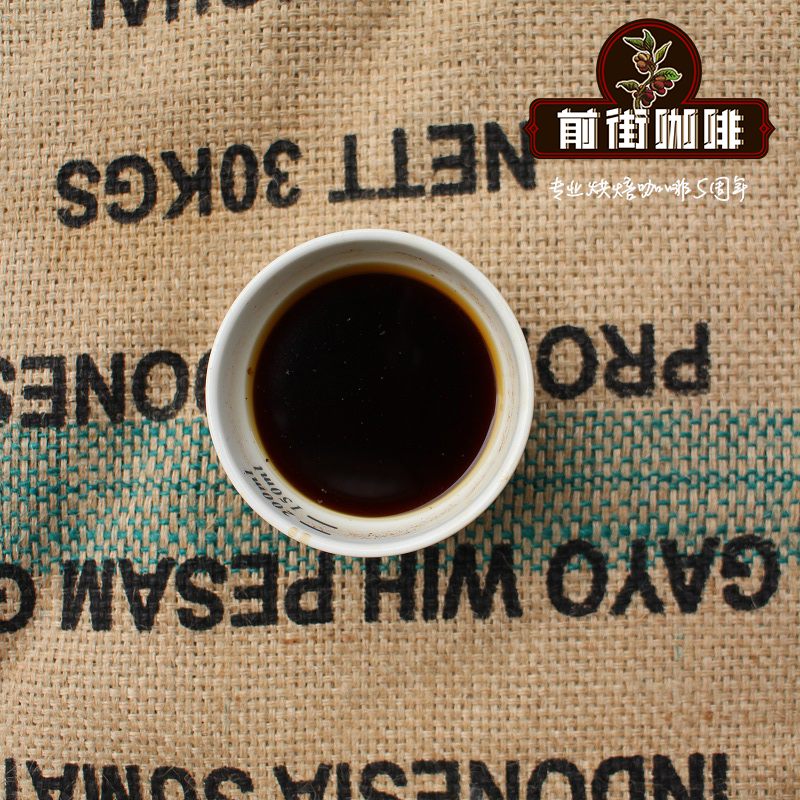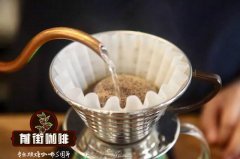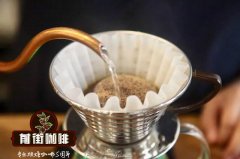Katim, Yunnan? Yunnan red cherry sun treatment? What is it?

Katim, Yunnan
Treatment: red cherry sun treatment
Variety: Katim
Altitude: 1450-1550 m
The variety is located in Yunnan between latitude 15 and Tropic of Cancer, and most areas are 1000-2000 meters above sea level. The topography is dominated by mountains and slopes, with large ups and downs, fertile soil, sufficient sunshine, rich rainfall and large temperature difference between day and night. These unique natural conditions form the particularity of Yunnan small-grain coffee taste-strong but not bitter, fragrant but not strong, slightly fruity.
Coffee cultivation in Yunnan is mainly distributed in Lincang, Baoshan, Pu'er and Dehong, where there are natural resources of low latitude, high altitude and large temperature difference between day and night, which makes Yunnan a golden growing area for producing Arabica coffee with high quality. The average temperature of Baoshan is 21.5℃, and the highest is 40.4℃, which is basically frost-free all the year round. It is recognized as the best producing area of small-grain coffee. The small-grain coffee cultivated here is famous at home and abroad for its strong but not bitter, fragrant but not strong, well-proportioned small noodles, mellow and fruity.
Catimor: an important variety of commercial beans at present. East Timor was colonized by Portugal for 400 years, and the Portuguese had long been in contact with East Timorese coffee trees. In 1959, the Portuguese moved the Brazilian bourbon mutant Kadura to East Timor and interbred with Tim, who was of Robusta origin, and succeeded in breeding Kadim with strong disease resistance and super production capacity. During the period from 1977 ○ to 1999 ○, leaf rust affected coffee producing countries around the world. With the assistance of international organizations, various producing countries vigorously promoted Kadim to fight leaf rust and increase production capacity. However, although Katim inherited the advantages of Robusta's strong disease resistance, but also inherited the gene of poor flavor, in addition, although the early Katim had a large production capacity, it needed shade trees to serve, otherwise it was easy to wither, which can be said to be strong and dry. Over the decades, many botanists have studied the improvement of Kadim varieties, and dozens of new varieties have been cultivated. Colombia is the biggest harvester. In 1982, Kadim, which can be planted in the sun, was cultivated and named after the country "Colombia." Costa Rica claims that unlike ordinary kadim, [Colombia], which has been interbred for many generations, is now the two main varieties in the country with Kaddura, which has long replaced Tibica, which is weak, sickly and with low yield. However, most of the winners of Costa Rican [COE] are Kaddura, and [Colombia], who is of Robusta descent, rarely wins the prize. A large number of [Supermo] commercial beans exported by Costa Rica should be lower altitude [Colombia] or Kaddura, rather than the traditional Tibica, which is the main reason why the flavor of [Supermo] is getting poorer and poorer, but it is impossible for Costa Rica to reproduce the less productive Tibica.
In order to improve the poor evaluation of the Catimor Cartim Cup, in recent years botanists from all over the world have turned to the interbreeding of Arabica and Katim for many generations, in an attempt to reduce the Robusta pedigree and improve the elegant flavor of Arabica, thus cultivating a new generation of Katim, including [CatimorH528], [CatimorH306], and [CatimorT5175] and [CatimorT8667] of Costa Rica. But Costa Rica has abandoned the cultivation of Kadim, focusing on Kaddura varieties, and exporting the improved Kadim to Asian countries. There are countless Katim strains, and the cup test results and habits of each strain are also different, but although it has been improved for many years, Katim has not yet entered the top 30 list of the International Cup. Kadim's biggest fatal injury is that it is not inferior to Kaddura, Kaduai or bourbon beans grown at low altitude, but the cup test results planted at high altitude are significantly lower than those of bourbon, Kaduai or Kaddura. It remains to be seen whether Kadim can ascend to the Hall of Great elegance. Looking forward to one day to cultivate a super Kadim suitable for high altitude, shocked the boutique coffee industry.
In 1959, the Portuguese mixed Brazilian Kaddura with Timo and bred the second generation of Cartimo, which has strong disease resistance and yield capacity. But the flavor is also poor, and it is an important variety of commercial beans at present. In recent years, botanists from all over the world have turned to the interaction between Arabica and Katimodo in an attempt to reduce the pedigree of Luodou in order to improve the bad reviews of the Katimo Cup.
So what on earth is red cherry tanning?
[red cherry tanning]
1. Take ripe coffee fruit
two。 Preliminary selection of impurities and inferior beans
3. Select floating beans: pour the coffee fruit into the sink, the ripe and full fruit will sink to the bottom of the sink, and the immature or incomplete fruit will surface.
4. Sun-drying: remove the ripe coffee fruit that sank at the bottom of the sink and spread it in the sun-drying field to reduce the moisture content from 70% to about 10-12%. Turn the fruit several times a day to dry evenly, and cover it at night to avoid moisture.
5. Remove the shell: after about two to four weeks of exposure, the outer layer of the coffee seed has been dry and hard, and then use a sheller to remove the shell.
So what are the advantages of this approach?
Advantages: the treatment process is very simple, does not need to invest too many tools and equipment, and except for the steps of removing floating beans, it does not need to use water, the cost is low, and it is widely used in areas where water resources are not abundant and less affluent.
There are four kinds of coffee trees in the world, but the coffee we drink now is mainly the fruit of two kinds of coffee trees, one is Arabica, the other is Robasta.
Coffee trees in Arabica are not easy to grow, many are on high-altitude slopes, and picking needs to be done manually. But it is better to have a balanced taste and less caffeine. And Robasta is relatively easy to grow, a variety of heat-resistant, cold-resistant, moisture-resistant, drought-resistant, disease-resistant. Once upon a time, coffee in Vietnam was planted by Robasta because of leaf rust and all the coffee trees planted in Arabica died. In addition, Rothbata is also relatively easy to harvest, in addition to manual vibration machines can also be competent. This variety has all kinds of benefits, but what is fatal is that the coffee beans produced are poor in aroma, lack of bitterness, lack of acidity, and high caffeine content, so they are mostly used to make instant coffee. Now most of the beans on the market are grown in Arabica.
Yunnan small grain coffee 3mura-4-year-old fruit tree.
Coffee is a short-day plant. Coffee has the characteristics of multiple flowering and concentrated florescence. The flowering period of small seed coffee in Yunnan is 2mi-July, and the flowering period is 3m-May. The flowering of coffee is greatly affected by climate, especially rainfall and temperature. The life span of coffee flowers is short, only 2 murmurs for 3 days. Small seed coffee usually opens at 3: 00 am and 5: 00 am, and blooms at 5: 00 am.
The development time of coffee fruit is longer. It takes 10 months for the fruit of small seed coffee to ripen in 10-December of the year. Rainfall has a great influence on fruit development, and climatic conditions directly affect fruit.

Important Notice :
前街咖啡 FrontStreet Coffee has moved to new addredd:
FrontStreet Coffee Address: 315,Donghua East Road,GuangZhou
Tel:020 38364473
- Prev

Guatemala Atitlan Lake Coffee producing area introduces how to drink Guatemalan coffee?
Professional coffee knowledge exchange more coffee bean information Please pay attention to the coffee workshop (Wechat official account cafe_style) after the impact of the Kuroshio movement, people gradually began to possess professional knowledge and technology related to the coffee industry. In addition to the annual large-scale coffee-related exhibitions, barista competitions and the ever-changing baking equipment of various countries, our loyalty and love for coffee is no longer
- Next

Brazil COE Award winning | introduction to the planting varieties of Queen Mojiana Manor | characteristics of Brazilian Coffee
Professional coffee knowledge exchange more coffee bean information Please pay attention to the coffee workshop (Wechat official account cafe_style) there are many kinds of coffee in Brazil. Like other Arabica coffee, most Brazilian coffee is not washed but dried, they are classified according to the name of the country of origin and the port of shipment. Brazil has 21 states and 17 states produce coffee, but five of them produce the most coffee
Related
- Does Rose Summer choose Blue, Green or Red? Detailed explanation of Rose Summer Coffee plots and Classification in Panamanian Jade Manor
- What is the difference between the origin, producing area, processing plant, cooperative and manor of coffee beans?
- How fine does the espresso powder fit? how to grind the espresso?
- Sca coffee roasting degree color card coffee roasting degree 8 roasting color values what do you mean?
- The practice of lattes: how to make lattes at home
- Introduction to Indonesian Fine Coffee beans-- Java Coffee producing area of Indonesian Arabica Coffee
- How much will the flavor of light and medium roasted rose summer be expressed? What baking level is rose summer suitable for?
- Introduction to the characteristics of washing, sun-drying or wet-planing coffee commonly used in Mantenin, Indonesia
- Price characteristics of Arabica Coffee Bean Starbucks introduction to Manning Coffee Bean Taste producing area Variety Manor
- What is the authentic Yega flavor? What are the flavor characteristics of the really excellent Yejasuffi coffee beans?

